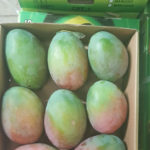
Kenya enjoys the production of mangos in at least seven regions. Only North-eastern has no substantial production of the crop. Eastern, the Rift Valley and the Coast provinces lead in production margins. Kitui and other parts of Eastern province produce an overwhelming 61% of the total output.
Though Europe comes with its own seasonal mango crop, farming is only concentrated in the Spanish Iberian Peninsula. And the reason it grows here is that the fruit does well in subtropical climate with a little bit of wintry attributes. This describes a region that has both tropical and cool weather factors. During the fruition period, mango requires a combination of hot and cool weather patterns.
Opportunities for European Importers
As an importer of mangos from Kenya, you can follow the most popular buying trends, for European customers to suit demand. The best varieties include Kent, Keitt and Tommy Atkins. The first two are perennially in demand while Tom Atkins is experiencing a little less demand.
Since Europe grows its own variety known as Osteen, you can decide to substitute this for ngowe variety form Kenya. Countries in the Middle-east and Asia have posted a high liking of this particular cultivar that is characterized by small fruits with a sweet taste.
Since 2013, Kenya has introduced drought-resistant, hardy varieties that have been been grafted from existing US varieties. One of these is Haden and Kent, two types that have come to suit the Kenya climate as they have in North America. When they first came into testing in Kenya, in 2013, the country had been exporting about 90% of its mango output to Europe.
Specifications
Kenya mangos conform to the standards that you can expect in Europe and North America. These include cleanliness of the skin, lack of pests, clarity, with no dark stains on the fruits’ skins and natural odor. Indeed, because each shipment undergoes Kenya Plant Health Inspectorate’s (KePHIS) inspection, it meets the expectations of low residue levels of less than 0.01%. Farmers, who have Good Agricultural Practices (GAP) certificates, normally maintain good hygiene, use natural manure as a fertilizer and harvest them when they are mature, to provide high quality produce.
The packaging of local mangoes conforms to European specifications. Though clients ask for different packages, the standard ones include Size A, which weighs about 350 grams. Size B of pallets weighs a maximum of 550 grams, while size C is about 800 kilograms. Any pallets above this weight pass as Size D, in European markets.
The wholesale packets include cardboard crates. By sea, these weigh 4 kilos, while by air, they can maximize to 6 kilos, per crate. To keep them in a good condition, mangoes are stacked in one layer with soft paddings between them and the pallet walls.
So, if you are searching for that mouth-watering shipment of mangoes, look no further than Kenya. This is why all major varieties, including the local ngowe are ready for the overseas markets. Talk to an expert at Mangos from Kenya for more information!

